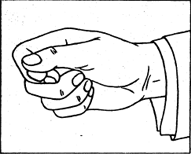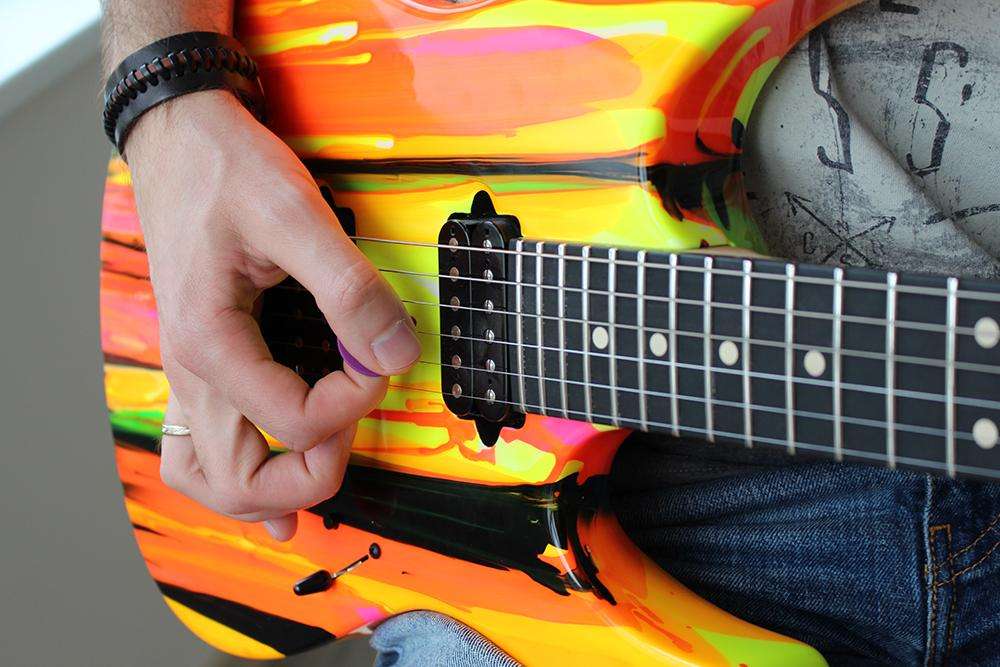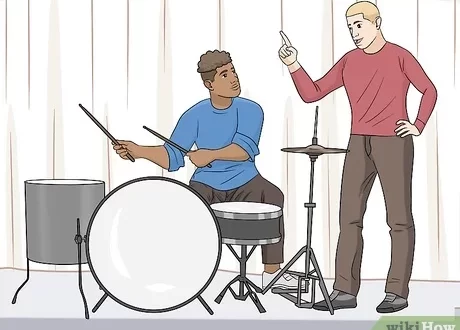
How to play a guitar with a mediator
Contents
The variety of musical instruments in the world is huge, as well as the variety of sound production techniques. Let’s take a familiar and common guitar: here is finger picking, playing in the tap and slap technique, playing with a capo and a tremolo lever . One of the oldest techniques is the use of mediator a.
This little accessory has not only survived to this day from antiquity, but also became widespread with the transition to electric guitars.
More about playing as a mediator
In the old days , the mediator was called the Greek word “plectrum” (or simply plectrum). It was a bone plate, which was held in hands while playing stringed instruments of antiquity – lyre, cithara, zither. With the invention of the immediate predecessors of the guitar in the late Middle Ages, the tradition of playing with the plectrum, by analogy with the lute and mandolin, partly spread to them.

After the Spanish guitar got rid of paired strings by the end of the 18th century, it became much more convenient to pluck the strings with your fingers. It was the finger technique that became the basis for playing the classical guitar in performances with the orchestra and solo numbers.
However, with the advent of electric guitars and the addition of a special style of playing them, the mediator gained popularity again and became almost indispensable for guitarists of all stripes.
What is a mediator for?
A mediator is a small, conveniently shaped plate that is held by the fingers of the right hand (for right-handers), while the left string clamps the strings on the fretboard , changing their tone.
Today, almost all guitar picks are made from different types and grades of plastic. In the past, they were made from horn, bone, and even thick leather.
Playing with a mediator om gives certain advantages:
- Protects fingers . With long and active play, nails and pads are seriously affected even by nylon strings. Not to mention metal ones.
- Increasing the volume and sonority of plucking and striking the strings . Unlike a soft fingertip and even a harder nail, a plectrum allows you to get a sharper, sonorous, clear sound. Sustain in this case is not so full, for that the so-called “attack” increases.
- The ability to play fast alternation of notes of the same key : tremolo , sixteenth, thirty-second. To do this with a finger or a nail is very difficult even for a professional.
- Get a special sound when playing the electric guitar . Specific playing techniques with special guitar effects (such as distortion) are possible only with the help of a plectrum .
How to hold a pick
 Proper sound production depends on the position of the hands and fingers. Although many guitarists have an “author’s grip” on a pick , guitar teachers advise learning how to hold correctly first, and as you gain experience, adjust the grip to suit yourself.
Proper sound production depends on the position of the hands and fingers. Although many guitarists have an “author’s grip” on a pick , guitar teachers advise learning how to hold correctly first, and as you gain experience, adjust the grip to suit yourself.
To grip a triangular plectrum correctly, bend your palm as if you were about to pick up a large mug of beer by the handle. Place the mediator on the end joint of the index finger, and press on top with your thumb. When the fret is turned inward, they have a sharp tip also looking inward. It is better to straighten the remaining fingers so that they do not cling to the strings and do not create additional overtones, or vice versa, do not dampen the vibration.
You should not strain the hand too much – the “wooden” limb loses its mobility, and you will not be able to play for a long time. The mediator may fall out of a relaxed hand . Find the right balance in the course of hard training. Over time, you will see that the soft and elastic grip allows you to perform even complex operations with the plectrum.
How to play guitar with a pick
After you have properly taken the pick between your fingers, it’s time to start training.
It is worth spending them in a quiet place so that no one distracts you and there is nowhere to rush.
The battle
Playing with a guitar pick e makes the sound richer and louder. If you have nylon strings, then the plectrum will give a harsher and sharper sound. On metal strings, the volume and clarity of accent strikes will increase.

Hand movements when playing with a fight do not differ from those when playing with fingers. True, the fret is a little more tense. While you are learning to play with the pick , do not keep it strictly parallel to the strings. From this, he begins to cling and “get stuck”, even if very thin, the speed will disappear. Leading your hand down, slightly lift the tip so that it passes through the countries at an angle, lifting the brush up, change the position of the tip to the opposite. The result is undulating movements and a harmonious sound.
Bust
Playing an om pick on separate strings is much more difficult than playing. Indeed, if with the finger method, the musician has several fingers at his disposal, each of which is closer to one or another string, then the tip of the mediator a is only one, so you should carefully work on coordination.

At first, you are unlikely to be able to play blindly, and this is normal. On the contrary, constantly monitor the position of the hand and fingers. The mediator should not fall to one side, scraping the string with an edge – playing is allowed only with the tip.
To increase the speed of plucking, the following technique is used: the first string is played from bottom to top, the second – from top to bottom, and so on in turn. This saves movement, allowing high speeds to be achieved.
downstroke
This is the name of a specific fighting style using a mediator a, when the movements of the brush are carried out only from the bottom up. They are usually used on an electric guitar in order to achieve the most uniform sounding riffs.
With a downstroke, you should relax the hand more to increase the speed of the return of the mediator a to its original position without increasing fatigue.
Effective exercises and playing techniques
The best way to gain confidence in playing the pick is to repeat the movements already learned in order to hone them, as well as mastering new ones. The best place to start is by practicing the basic skills:
Put your hand in the starting position. The lower edge of the fret can be placed on the soundboard for support – it should not muffle the strings. Move the pick up and down with the pick, playing one string without touching the others.
Imitation of the game by fighting – the brush does not rest on the deck. However, the forearm is almost motionless. Try to make the amplitude dependent on the required power and the volume of the game.
Mastering search. Sit in front of a mirror so you can see your hand. Start playing any fingering patterns by changing chords with your left hand. Change drawings from simple to complex.
Results
Playing the guitar with a pick is a technique that everyone should master. Acoustics with nylon strings will sound louder and harder, and for an electric guitar, a plectrum is a basic accessory.





